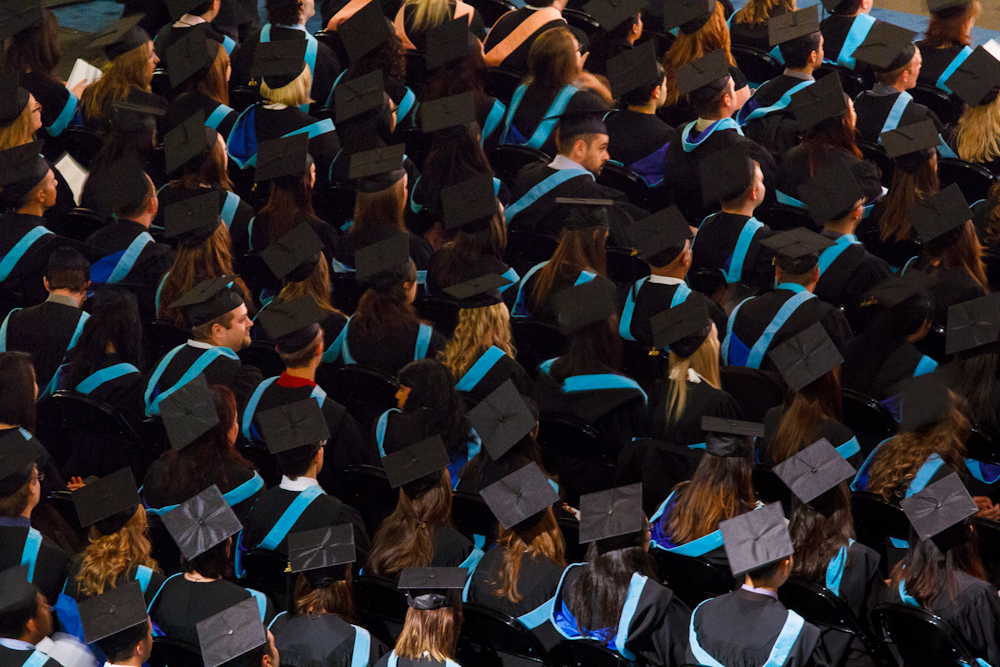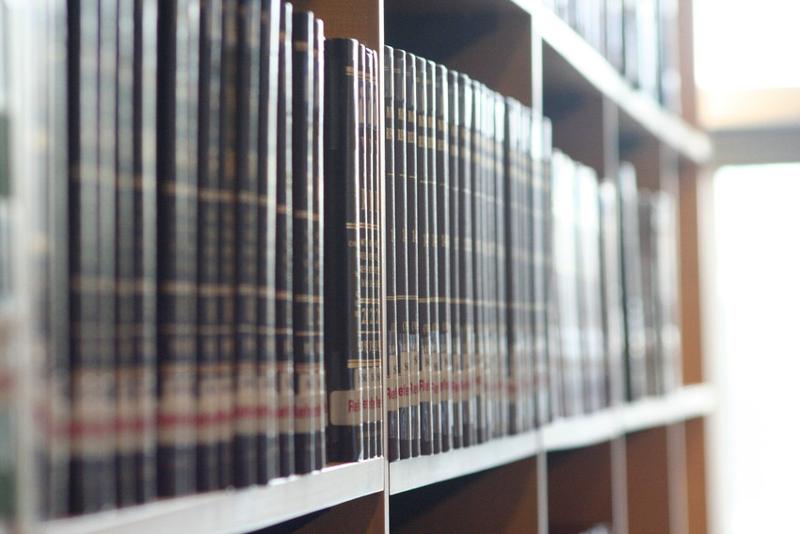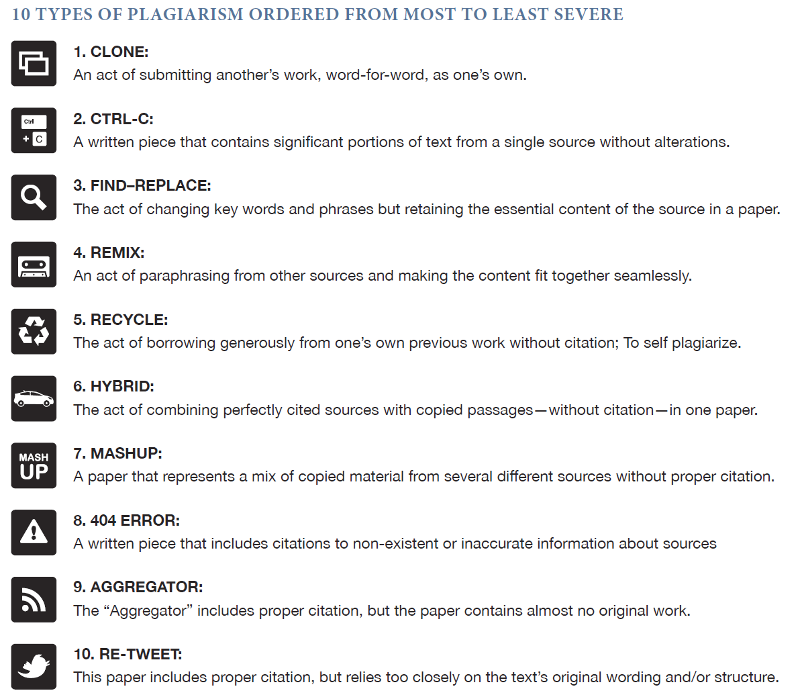 I've just started university and I'm constantly hearing about academic integrity, dishonesty and academic misconduct. I'm not quite sure about what it really means.
I've just started university and I'm constantly hearing about academic integrity, dishonesty and academic misconduct. I'm not quite sure about what it really means.Academic Integrity
Learning Module 1
These academic integrity learning modules will provide a guide you to what academic integrity means and how to avoid violating UOIT's academic conduct policies. Links to more detailed information are provided in some modules. You will have the opportunity to do self-tests as you go. At the end of each module, you may complete a quiz and submit your grade to your instructor.
 I've just started university and I'm constantly hearing about academic integrity, dishonesty and academic misconduct. I'm not quite sure about what it really means.
I've just started university and I'm constantly hearing about academic integrity, dishonesty and academic misconduct. I'm not quite sure about what it really means.
Academic misconduct/dishonesty is the violation of an institution's policy and values. If stealing is a crime, then its equivalent in the academic world would be cheating including plagiarism, misrepresentation, lying, stealing an exam, copying from someone else, and so on. The various types of misconduct are academic offences punishable by disciplinary action. Any form of cheating is a violation of regulations and rules set out by an institution. Academic misconduct happens when an individual attempts to gain improved grades through unfair advantages such as by cheating, plagiarizing, lying, and so on.
I know academic misconduct is something to do with cheating on your tests and assignments, but I don't cheat. So why is this module relevant to me?
Simply put, academic misconduct includes a wide range of actions that you may not recognize as cheating. Most people know that when you are working on an assignment and you use information from an article, a website, or a book, you are taking someone else's ideas or words and using them as a part of your work. If you don't give credit to the author of the original work, you are stealing from them. If you don't understand how to cite, reference, paraphrase and quote correctly, you may unintentionally commit an offence in violation of the university's academic code of conduct. In addition, other actions such as working with someone on an individual assignment (i.e., unauthorized collaboration) or reusing your own old essays or ideas (self-plagiarism) are also forms of academic misconduct. And there are more, so keep reading.
NOTE: UOIT's official policy on academic conduct can be found in the most recent UOIT Academic Calendar.

Academic integrity encompasses five fundamental values:
Honesty among all members of a college or university allows trust to be built over time.

Now that I know what academic integrity is, can you explain to me why it is important for students to understand?
A person who has integrity is someone who is honest and trustworthy. For students, your personal morals and values reflect your character and credibility. At university, maintaining academic integrity while earning your degree represents your true academic accomplishments.
Students with integrity will work hard to earn their degrees in a fair and honest way by putting in the hours to study and complete assignments. When a student intentionally cheats through university, this integrity is compromised and the value of the degree and the morals of the individual are diminished. This lack of credibility then follows you into the workforce and can impact your professional goals. Nobody wants a doctor who cheated to get his medical degree to perform a life or death surgery on them or a bad engineer to build bridges.
Many studies have found that people who engage in academically dishonest practices in school are significantly more likely to be dishonest, cheat, or even commit crimes like fraud or stealing in the workplace (Crittenden, Hanna & Peterson, 2009, p.339; Sims, 1993; Nonis and Swift, 2001; Lawson, 2004; Harding, Carpenter, Finelli, et al., 2004; Preiss, 2013).
Why does UOIT care so much about Academic Integrity? They don't really care what I do after I graduate!
All universities are only as strong as their reputation. UOIT is a relatively new university and it is building its reputation in both teaching and research. The university's credibility is reflected in both the students who graduate with a degree from UOIT and in the researchers at the university. If the university graduates students who have not truly earned their degrees, and it gains a bad reputation for its graduates, all graduates and their instructors will have reduced credibility. Graduating students looking for jobs or entrance into graduate school or law school may be prevented from achieving their goals; faculty members applying for research grants or submitting research for publication may not be successful. The negative impact of cheating in any form has ripple effects beyond the immediate consequences.
Can you give me an example?
Academic integrity is important within the university and in the professional world. For example, in 2015, two Toronto doctors, Sylvia Asa and Shereen Ezzat, were forced to retract a scientific paper from the American Journal of Pathology due to allegations of falsification (Ezzat, Zheng, Zhu, Wu & Asa, 2015). This will be their second article which has been retracted after concerns of falsification (Robinson, 2015). Dr. Asa's name was also on a paper containing falsified images, which were changed only after concerns were raised by readers (Robinson, 2015). The findings reported in the two articles are being reviewed to determine if they are valid and reproducible (Robinson, 2015). Although only one of the two doctors may have intentionally or unintentionally falsified their research, both would be at fault because both of their names are on the paper. The impact of the allegation goes beyond the retraction. Dr. Asa resigned as head of pathology, a title she held for over a decade where in the last year she made over $430,000 (Robinson, 2015). The effect of these types of allegations can negatively impact the credibility of all researchers.
Allegations of academic misconduct can also catch up with years after graduation from university or college. For example, in 2013 Chris Spence was forced to resign as the director of education for the Toronto District School Board after he was caught plagiarizing parts of several opinion-editorial articles published in a Toronto newspaper. Subsequently, he was also found to have plagiarized parts of his doctoral thesis which was completed in 1996. While no decision has been made yet regarding this allegation, Spence risks having his degree revoked. He now must work to restore his reputation in order to find new work. Academic misconduct is a serious offence which may affect not only your university career, but also your professional career. As seen within this example, those who engage in academic misconduct have been found to be more likely to be dishonest in the workplace (Crittenden, Hanna & Peterson, 2009). Careful attention to academic integrity while studying at university increases credibility and better prepares students for the workplace.
References
Ezzat, S., Zheng, L., Zhu, X.-F., Wu, G. E., & Asa, S. L. (2015). Targeted expression of a human pituitary tumor-derived isoform of FGF receptor-4 recapitulates pituitary tumorigenesis. Journal of Clinical Investigation, 125(8), 3303. Retrieved from http://go.galegroup.com.uproxy.library.dc-uoit.ca/ps/i.do?id=GALE%7CA428177084&sid=summon&v=2.1&u=ko_acd_uoo&it=r&p=AONE&sw=w&asid=73209244d698ac2c0a334b76b901e0be
Fox, C. (2014, June 11). Former TDSB director Spence will fight plagiarism charges, his lawyer says. The Huffington Post. Retrieved from: http://www.cp24.com/news/former-tdsb-director-spence-will-fight-plagiarism-charges-his-lawyer-says-1.1863737
Jones, A. (2013, January 10). Chris Spence Quits After Plagiarism Admission. The Huffington Post. Retrieved from: http://www.huffingtonpost.ca/2013/01/10/chris-spence-quits-plagiarism-resigns_n_2450504.html
Robinson, M. (2015, August 4). Third retraction for Toronto doctor due. The Toronto Star. Retrieved from: http://www.thestar.com/news/gta/2015/08/04/third-retraction-for-toronto-doctor-duo.html
Robinson, M. (2015, July 27). Top University Health Network doctor steps down amid falsification data investigation. The Toronto Star. Retrieved from: http://www.thestar.com/news/gta/2015/07/27/top-university-health-network-doctor-steps-down-amid-falsified-data-investigation.html
As a society, we rely on the academic and journalistic integrity of other people's work. The whole point of academic research is to share knowledge with others and learn from one another. Since knowledge and ideas are the primary product produced by academic communities, it is essential that this knowledge is accurate and gives credit to those who created it. As a student, you are part of the academic community.
Besides reputation and credibility, why else should I care about academic integrity?
Academic dishonesty impedes a student's learning by belittling the meaning of a higher education. A degree at UOIT reflects the genuine accomplishments of every student. When individuals use falsification, misrepresentation, and deception to earn their degree, it devalues the degrees of the students who worked with integrity despite the stressful burden of school and life. You cannot truly gain the full worth of your education by not working for it fairly.

I am confused about the idea of plagiarism. I understand that it is stealing someone else's words or ideas, but how can you steal words and why is that even wrong?
At universities, people create knowledge and information. If you use their words and ideas without citing and referencing them, it is stealing. This type of stealing is called plagiarism or "literary theft" and is one of the most serious offences in the academic community. When you use someone else's words and ideas (other intellectual property), you must give credit to the author by using an in-text citation or footnote and a reference. The use of other people's work must be properly acknowledged and referenced in all written material. When you do not include a citation and reference, your reader will assume that the words and ideas are yours (UOIT Policy pp. 35).
Then, how is plagiarism different from copyright violations?
Often plagiarism and copyright violations overlap, but plagiarism is when you claim someone else's words and ideas as your own. You can violate copyright laws even if you give credit to the original source of the work you are using. For example, if you were to photocopy a significant portion of a textbook and post it online with the author's name but without the publisher's permission, you would be violating copyright laws but not committing plagiarism.
You are allowed to use small excerpts from copyrighted materials without violating copyright laws, but you must always provide a full bibliographic reference and a citation. According to the university: "Copyright holders may require a particular citation style or certain information be excluded. For example, licensed library databases or creative commons licenses may have specific requirements listed." So always be careful to look out for specific guidelines outlined by the copyright holders in sources you're consulting.
For more information on copyright go to: http://www.uoit.ca/sites/library/about_the_library/uoit-library-policy-and-related-documents/copyright-guidelines.php
I understand what plagiarism is now, but is there more to plagiarism than just copying and pasting someone's words/ideas? Are there different types of plagiarism?
Of course! Plagiarism can take on numerous forms, some of which are as followed:

Plagiarism is a form of cheating — it is the act of taking someone else's word or ideas and using them as your own. Other forms of misconduct include cheating on examinations, assignments, reports, or any other work used to evaluate student performance, including copying from another student's work or allowing ones own work to be copied, submitting another person's work as ones own, fabrication of data, consultation with an unauthorized person during an examination, or use of unauthorized aids. 
Impersonation, for example, occurs when someone pretends to be you or when you pretend to be someone else for any type of academic evaluation, whether its an exam or participation in an online class or on a discussion board (Hill, 2010, p. 5). UOIT's policy explicitly states that [i]mpersonating another student or allowing oneself to be impersonated for purposes of taking examinations, or carrying out laboratory or other assignments is not allowed. Another form of cheating is the falsification or misrepresentation of data and information. This includes falsifying academic records, including tests and examinations, or submitting false credentials for purpose of gaining admission to a program or course, or for any other purpose.
Falsification is also misrepresenting someone's work or ideas (Hill, 2010, p.5). For example, if you use a study that concludes that smoking has many negative and typically severe health effects, but you use an ambiguous quote from the study to say that the study found that smoking only has minor health consequences, this would be falsifying the information reported in the study. When paraphrasing other people's writing/ideas/research, you must accurately summarize the information and not distort its meaning. Another example is falsifying results of a lab experiment to show what should have been the correct results even though you made a mistake when conducting your experiment. Fabrication, on the other hand, is making up information without any data to support it (Hill, 2010, p.5).
Misrepresentation can refer to the misrepresentation of facts, whether written or oral, which may have an effect on academic evaluation. This includes making fraudulent health claims, obtaining medical or other certificates under false pretenses, or altering certificates for the purposes of misrepresentation. In addition, this type of cheating can also include the misrepresentation of yourself (i.e., impersonating another person or having someone pretend to be you) (Hill, 2010, p.5).
The bottom line is that falsification, fabrication and misrepresentation are cheating and types of academic misconduct.
That's all interesting, but what is the difference between falsification and fabrication?
The bottom line is that they are both cheating and a type of academic misconduct. Falsification is misrepresenting your own or someone else's work or ideas (Hill, 2010, p.5). For example, if you use an ambiguous quote from a study to make an argument that the study does not actually support, you are falsifying the research. When you paraphrase other people's writing, ideas, or research, people assume that you are doing so accurately and without distorting its meaning. Another example would be that you could falsify the results of an experiment to show what should have been the correct results even though you made a mistake when conducting your experiment. Fabrication is making up information (Hill, 2010, p. 5) or data. In the case of the Wakefield study on the link between MMR vaccine and autism, Wakefield both falsified information and fabricated his results.
If fabrication is making up information and falsification is twisting or lying about information to suit your conclusions, what is misrepresentation?
There are overlaps between the three terms, but there are also some distinctions. Usually, misrepresentation refers to things like making fraudulent health claims, obtaining medical or other certificates under false pretences, or altering certificates like a doctor's note (UOIT Policy p.35). Misrepresentation can also include impersonation (Hill, 2010, p.5), for example, getting a friend to take an exam while pretending to be you.
According to Turnitin.com's White Paper, "The Plagiarism Spectrum: Instructor Insights into the 10 Types of Plagiarism," there are 10 common types of plagiarism.

Source: Turnitin.com White Paper, "The Plagiarism Spectrum: Instructor Insights into the 10 Types of Plagiarism," http://go.turnitin.com/paper/plagiarism-spectrum?Product=Turnitin&Notification_Language=English&Lead_Origin=Website&source=Website%20-%20Download
Instructions: Answer all the questions and click submit at the end, then download your grade and certificate.
